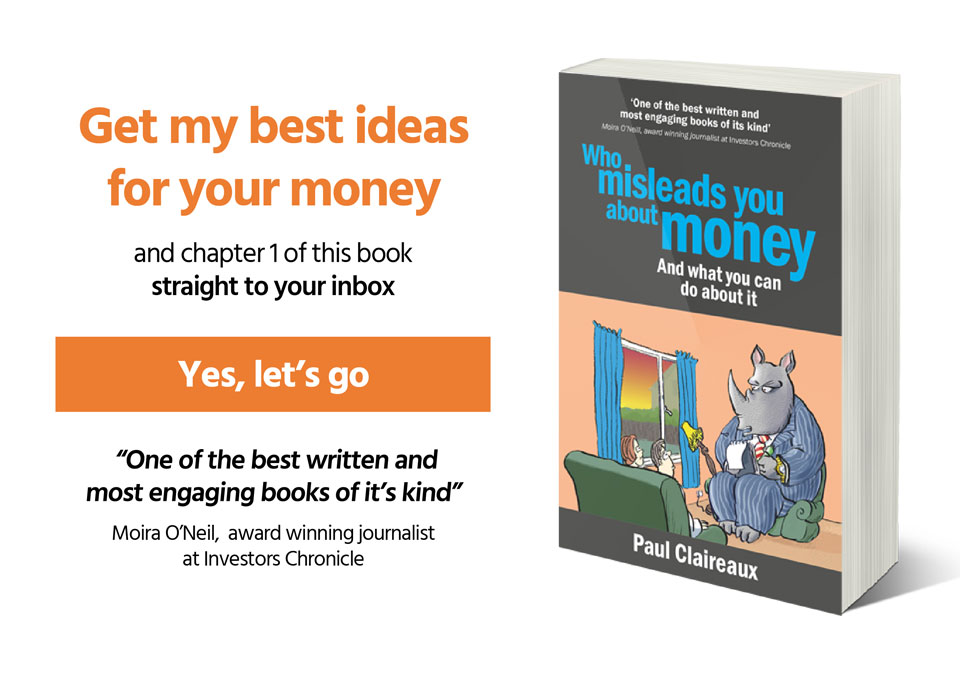Stockmarket levels now

So, how’s the UK Stockmarket looking now?
Is it safe to invest your life’s savings?
This is a big question – with many possible ways of answering it – but if you had to choose just one key number for some guidance on whether Stock-markets are over (or under) priced at any given time – what would it be?
Well, most good fund managers would have the Price to Earnings ratio (or PE for short) on their list.
The PE is simply the Price of a stock (or market) divided by it’s Earnings (aka profits). And, as you can see, on this measure at least, the UK Stock-market was, by historical standards, ‘cheap’ in March 2009 and again in 2011.
But . . . on this basis . . . it’s NOT cheap now.
(Note also that, in asking whether a market is ‘cheap’ or ‘expensive’, fund managers also look at average earnings data over a full economic cycle of many years. By removing year to year extremes, the averaged data gives a ‘fairer’ long term picture. Learn more more about this ‘cyclically adjusted PE (or CAPE) here
And this ‘Spot PE’ ratio could obviously move back into a more normal range in a number of ways:
- Prices of shares could fall – a LOT or
- Company earnings (profits) could rise – a LOT or
- Both elements (Prices and Earnings) could move.
What might happen from here?
Well, nobody knows! (sorry)
If you want the ‘rosy’ picture you can talk to any ‘market tracking fanatic’ but reality is a tad more challenging.
You see, the world’s central banks have distorted free markets for years now – by cutting interest rates close to ‘Zero’ and holding them there.
Their idea was to persuade us (and companies) to borrow and spend (Invest) more when the financial world imploded in 2008-09.
And if we’d all gone ahead and increased our spending (investing) then we might have enjoyed a strong recovery which would have boosted company earnings – and they could have put interest rates back up to more ‘normal’ levels.
But we didn’t do that because, in times of extreme uncertainty – especially when we’re already loaded up with debt (which we were back then) – we like to pay down debt, not load up on more. And companies tend to hold back from investing.
It’s really all about confidence.
And central banks can’t force us to have more of that !
As and when we ( as individuals) and company bosses become more confident in the future then we’ll start to borrow and spend (or invest) more.
(Provided that we can persuade the banks to lend us more of course)
So, why have markets raced back up to high levels without the economy booming?
Well, lots of factors drive markets but one big factor is your prospective return from a ‘safe’ alternative.
Investors have simply had enough of near zero returns on bank deposits (or other safe assets like government bonds) – so they’ve ‘rotated’ away from those things and into the stock-market.
And with inflation looking like it might make a comeback, those zero returns on safe assets look even less attractive. So more and more investors are getting tempted to move their money into shares.
We can’t know how long the ‘money’ tide will keep flowing into shares – but we do know that a single ‘event’ stop it.
That ‘event’ could be an unexpectedly big rise in interest rates – perhaps triggered by higher inflation – or some other ‘unknown unknown’
In case you’ve not heard of those – Donald Rumsfeld explains the concept here quite well 😉
And if you’re an investor – focus on these KEY points:
1. What RISKS is your money exposed to? and
2. Can you afford to take those risks?
The hard truth is that markets don’t care what we (or our advisers) ‘hope for’ as a long term return on our money.
At some point, something normally ‘gives’ and markets jolt back (or forwards) towards more normal PE ranges.
It seldom happens smoothly and they often overshoot their ‘normal’ range in both directions.
So it’s essential for you to understand your ‘capacity for risk'(CFR) on your money – and to understand that your CFR might be very different to your ‘attitude to risk’ (ATR)
This point is, sadly, overlooked by too many financial advisers.
Indeed, the Financial Conduct Authority (the UK’s regulator) has been concerned about the quality of investment advice – on this very issue – for at least 6 years. And I’d argue that it’s about time they did something effective about it.
In the meantime, I’ll write another piece for YOU here.
To help you protect your own money from bad advice before it happens.
For that and other future Insights, sign up for newsletters below.
Paul
Please share your thoughts in the comments below.
You can log in with your social media or DISQUS account OR
To “post as a guest” – just add your name and that option will pop up.



Discuss this article